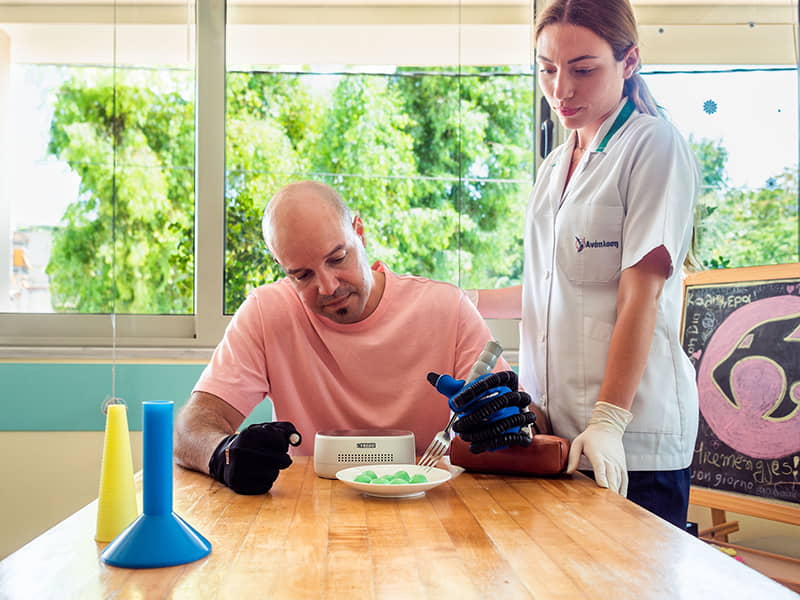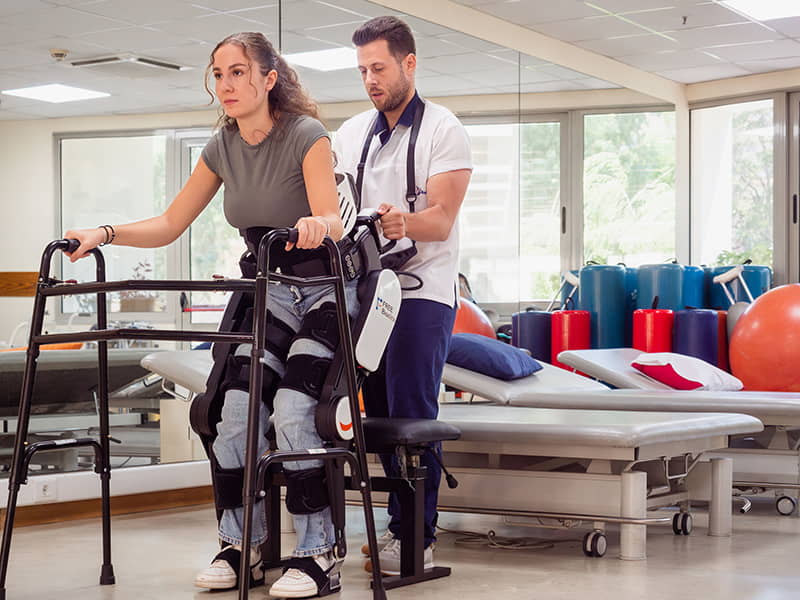Over the past two decades, robots have expanded their role in rehabilitation from assistive equipment to innovative, therapeutic devices. They now play an important role in accelerating the rehabilitation of patients suffering from neurological or musculoskeletal diseases. In the context of rehabilitation, a robot can be thought of as a sophisticated piece of equipment using motors to perform movements, sensors to measure parameters, and controlled by a sophisticated computer.
In patients with neurological and musculoskeletal disorders, robotic therapy has several actions.
After acute injury, the high-intensity, repetitive, movements produced stimulate reorganization of neural tissue through processes collectively known as neuroplasticity. Robotic therapy can produce this increased intensity of therapy, much more easily than a therapist alone. At every stage of rehabilitation, robotic therapy can reestablish physiological movement patterns, maintain joint mobility, and increase muscle strength.
In ANAPLASI, we work with advanced robotic technology in situations of proven benefit, as validated by international, peer-reviewed, scientific studies. All therapy sessions using our robotic equipment are conducted by specially trained therapists. As with any rehabilitation equipment, robotic therapy is most effective when incorporated into the comprehensive rehabilitation program, individually designed for each patient, by the Trans-Disciplinary Team of Anaplasi.





